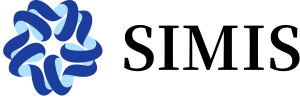Introduction to Alexandrov geometry and Degenerations of geometric objects
The goal of this course is to present two theories about degenerations of spaces in geometry. In the first part, we introduce Alexandrov Geometry. In differential geometry, being positively or negatively curved is defined in terms of inequalities satisfied by the coefficients of the curvature tensor. However, riemannian manifolds can degenerate to objects that do not keep a manifold structure. Alexandrov geometry is about giving a meaning to curvature inequalities in the general settings of metric spaces.
In the second part, we will discuss translation structures as examples of flat metrics with conical singularities and present the various compactification theories for their moduli spaces. If time allows, we will also discuss degenerations of complex affine structures with the recent proof of the existence of closed geodesics in dilation surfaces.
In the second part, we will discuss translation structures as examples of flat metrics with conical singularities and present the various compactification theories for their moduli spaces. If time allows, we will also discuss degenerations of complex affine structures with the recent proof of the existence of closed geodesics in dilation surfaces.

Lecturer
Date
8th October ~ 25th December, 2024
Location
| Weekday | Time | Venue | Online | ID | Password |
|---|---|---|---|---|---|
| Tuesday,Wednesday | 10:40 - 12:15 | Online | ZOOM 14 | 712 322 9571 | BIMSA |
Prerequisite
Basic Differential Geometry and Complex Analysis
Syllabus
Part 1: Alexandrov Geometry
1) Gromov-Hausdorff convergence of metric spaces
2) CAT(0) spaces
3) Dimension theory for CAT and CBB spaces
4) Gradient Flow
Part2 : Geometric structures on surfaces
1) Introduction to the flat geometry of translation surfaces
2) A flat geometric picture: The WYSWYG compactification of strata of meromorphic differentials
3) An algebro-geometric picture: The Multi-scale compactification of strata of meromorphic differentials
4) Degenerations of complex affine structures: proving the existence of closed geodesics in dilation surfaces
1) Gromov-Hausdorff convergence of metric spaces
2) CAT(0) spaces
3) Dimension theory for CAT and CBB spaces
4) Gradient Flow
Part2 : Geometric structures on surfaces
1) Introduction to the flat geometry of translation surfaces
2) A flat geometric picture: The WYSWYG compactification of strata of meromorphic differentials
3) An algebro-geometric picture: The Multi-scale compactification of strata of meromorphic differentials
4) Degenerations of complex affine structures: proving the existence of closed geodesics in dilation surfaces
Audience
Undergraduate
, Advanced Undergraduate
, Graduate
, Postdoc
, Researcher
Video Public
Yes
Notes Public
Yes
Language
English
Lecturer Intro
Guillaume Tahar obtained his Ph.D from Université Paris Diderot, under the supervision of Anton Zorich. He was a senior postdoctoral fellow at the Weizmann Institute of Science and joined BIMSA as an Assistant Professor in 2022. His research focuses on geometric structures on surfaces, with applications to moduli spaces and dynamical systems. He contributed to the study of various flavours of geometric structures, including translation surfaces, polyhedral metrics, cone spherical metrics and complex affine structures. His approach typically involves a mix of complex analysis, geometric constructions, and combinatorial reasoning.
His key results include the proof of the existence of closed geodesics in dilation surfaces, the complete characterization of configurations of local invariants realized by a differential on a Riemann surface and the establishment of Grünbaum's asymptotic classification for simplicial line arrangements with few double points.
His recent research interests include the topological interpretation of quantum invariants of knots, the counting of BPS states in quantum field theory and holomorphic dynamics in higher dimensions.
His key results include the proof of the existence of closed geodesics in dilation surfaces, the complete characterization of configurations of local invariants realized by a differential on a Riemann surface and the establishment of Grünbaum's asymptotic classification for simplicial line arrangements with few double points.
His recent research interests include the topological interpretation of quantum invariants of knots, the counting of BPS states in quantum field theory and holomorphic dynamics in higher dimensions.





